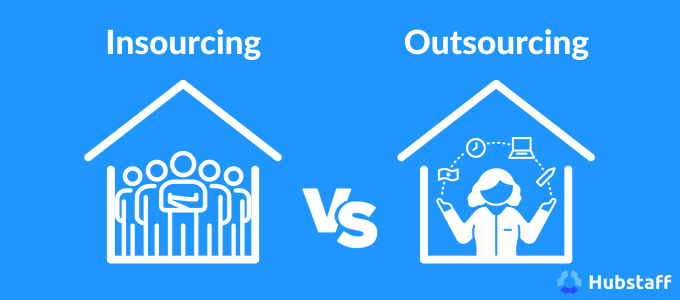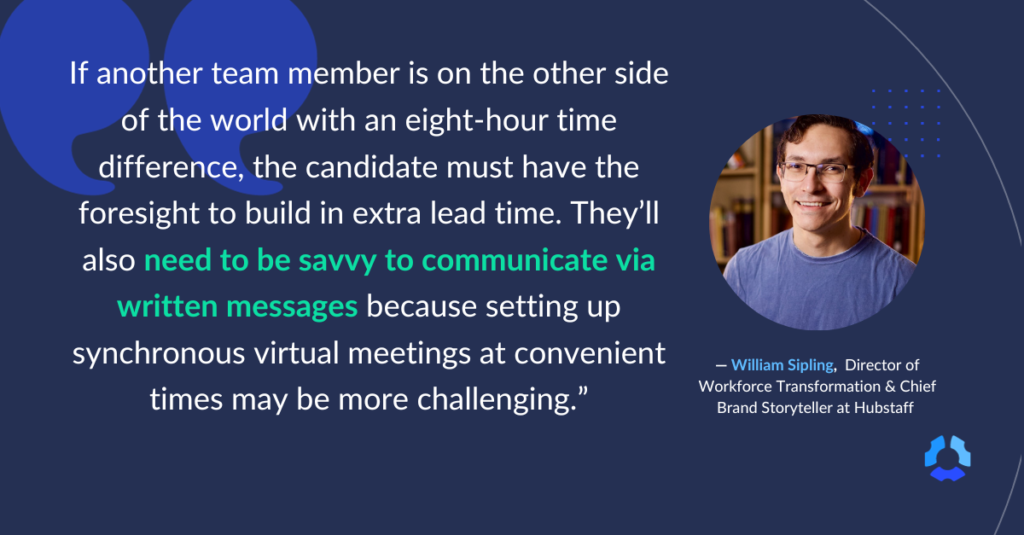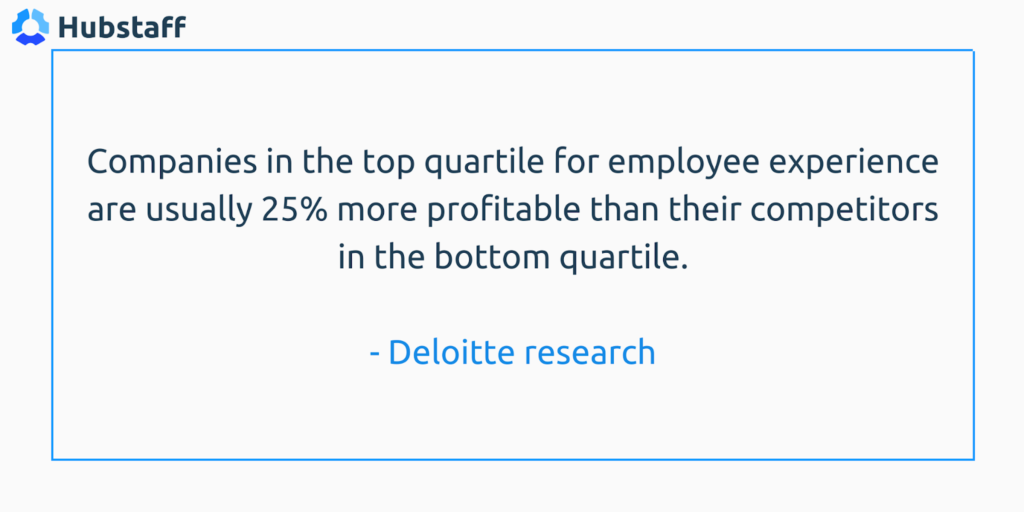Outsourcing and insourcing are critical topics in workforce management discussions. For business owners, access to the right talent at the right time requires careful thought and calculations.
Pressed for time? Here’s the big picture: Insourcing utilizes a company’s internal team to accomplish more tasks, allowing for more control and oversight. Outsourcing brings in external team members to provide access to specialized expertise and resources.
What do businesses stand to gain? With the right approach, outsourcing and insourcing can both play instrumental roles in propelling a company toward its strategic objectives in today’s dynamic marketplace.
How can you make the right choice? There isn’t a one-size-fits-all solution to insourcing or outsourcing work. Businesses will need to consider the benefits and costs associated with each. Our goal is to give you the necessary information to make the right choice for your team.
Boost your team’s efficiency with Hubstaff's productivity tools
Defining insourcing and outsourcing

What is insourcing?
Insourcing refers to bringing a task or job function in-house rather than hiring external resources. Businesses that insource their talent utilize existing employees to manage workloads. Insourcing may borrow talent from other departments or roles, and be an effective way to allow employees to “try on” other roles.
What is outsourcing?
Outsourcing involves hiring a third-party company or external employees to perform specific job tasks that would otherwise be done in-house.
Business process outsourcing (BPO) is one “back office” category of tasks that is commonly outsourced. Outsourced tasks could range from individual work items like running payroll each week to larger-scale operations like customer service or manufacturing.
There are three common standard types of outsourcing:
- Offshore outsourcing: Offshoring refers to hiring a business or contractor from another country, far from your headquarters. For example, a company in the U.S. hiring a virtual assistant based in the Philippines.
- Nearshore outsourcing: Nearshoring is hiring a business or contractor in nearby countries. For example, a company in the U.S. hiring someone based in Canada.
- Onshore outsourcing: Onshoring is hiring a business or contractor inside your country. For example, a company in Indiana hiring a company or individual based in California.
Advantages of outsourcing
Outsourcing brings numerous benefits to an organization:
- Cost efficiency: Outsourcing can significantly reduce operational costs. By accessing the specialized services of an external provider, companies can avoid the expense of developing functions, capabilities, or services in-house.
- Access to expertise: Outsourcing provides businesses with access to expert skills and advanced technology that they may not possess internally. Outsourcing talent allows companies to be competitive without investing heavily in training or equipment.
- Flexibility: Outsourcing non-core tasks lets companies focus more on business operations rathan than administrative work. This flexibility enables them to adapt quickly to changing market demands.
- Risk management: Outsourcing can help distribute risk by sharing associated responsibilities with the outsourcing partner. Sharing risk can be particularly beneficial in areas such as accounting and finance, where the external provider’s expertise can help mitigate compliance and legal issues.
- Scalability: Outsourcing can provide scalability that might be difficult to achieve internally. Companies can quickly ramp up or scale down operations as needed without hiring or laying off full-time internal employees.

Disadvantages of outsourcing
Despite its many benefits, outsourcing also carries several potential disadvantages. These are some of the cons of outsourcing that businesses need to consider before hiring outsourcing services:
- Lessened access to quality control: When functions are outsourced, companies may lack oversight in handling tasks, potentially leading to lower quality or efficiency. Internal teams can be crucial for maintaining quality control and a company’s success.
- Communication barriers: Differences in time zones, languages, and cultures can sometimes hinder effective communication with outsourcing partners. With an outsourced team in a different time zone or country, you might not always be able to get immediate assistance.

- Dependence on vendors: Over-reliance on an external supplier can present risks, mainly if the vendor goes out of business or changes their offerings or pricing models.
- Confidentiality risks: Outsourcing certain functions, especially those dealing with sensitive data security and internal resources, may increase the risk of intellectual property theft or data breaches.
- Negative impact on employees: Hiring an outsourcing firm can sometimes lead to job losses within the company, potentially causing a decrease in morale and productivity among permanent employees.
Advantages of insourcing
Insourcing comes with several significant advantages:
- Control: Insourcing provides complete control over the business processes, allowing for more efficient management and coordination. When core business functions are handled exclusively by an in-house team, decision-making and business strategy are easier to manage.
- Communication: By keeping operations in-house, teams can communicate more effectively, reducing the potential for misunderstandings or miscommunications when dealing with external parties.

- Confidentiality: Insourcing allows businesses to protect sensitive information better, as there are fewer security risks, including exposing intellectual property or confidential data to a third-party vendor. With an insourced business model, you’ll have greater peace-of-mind when it comes to intellectual property protection.
- Skill development: Insourcing encourages the development of internal skills and expertise, as employees are provided with opportunities to learn and grow within their roles.
- Reduced labor costs: Over the long term, insourcing can result in lower labor costs, as businesses can eliminate the fees and margins charged by third-party vendors. However, this may require an initial investment to develop internal operational infrastructure.
Disadvantages of insourcing
While insourcing has benefits, it also entails potential challenges. Here are some of the cons of insourcing:
- Initial investment: As mentioned, insourcing often requires a significant upfront investment, whether for hiring new staff, training existing employees, or purchasing necessary equipment.
- Management complexity: The more functions a company insources, the more complex its operations become. Insourcing requires effective management and could stretch existing resources.
- Risk of overhead costs: If the insourced function doesn’t generate enough value or profits, it may lead to bloated overhead costs that can harm the company’s bottom line.
- Time-consuming: Building a competent team and setting up processes in-house can take time, delaying the delivery of projects and services.
- Lack of external expertise: Companies may need to gain more specialized knowledge, experience, and innovative practices that external service providers can offer.
Deciding what’s best for your business: weighing the pros and cons
The decision to insource or outsource your talent pool is a crucial strategic choice for businesses, requiring a careful evaluation of the pros and cons of each option. Let’s compare some of the critical issues.
Costs and resources
Paying an internal team, including benefits and insurance, adds up. However, though it may require a significant upfront investment, insourcing can lead to cost savings and increased operational efficiency in the long run. You’ll have dedicated staff with deep institutional and industry knowledge, if you ensure they have a positive employee experience.
The primary objective of outsourcing is to optimize resources, reduce overhead costs, and gain access to specialized skills or technologies. Again, while internal hiring costs can add up, the investment can be cheaper and more effective in the long run.
Competitive edge
Outsourcing can give businesses a competitive edge when executed correctly, allowing them to focus on their core competencies while augmenting their capabilities with external expertise.
Just like outsourcing company talent, insourcing can provide a competitive advantage in its own way by strengthening the company’s core abilities when done strategically.
Internal vs external knowledge
The fundamental motivation behind insourcing is to maintain control, increase internal skills, and enhance organizational communication and coordination. Insourced teams strongly understand internal messaging, company culture, and have the closest product or services knowledge. Training new employees or contractors on internal knowledge is time-consuming and expensive.
However, insourced teams may lack external expertise and can become siloed with internal processes and approvals. Outsourcing can bring a deeper wealth of knowledge to an internal team.
The employee experience
One crucial factor is how outsourcing can impact the internal company culture and employee experience. Outsourcing may lead to loss of control, communication barriers, dependency on vendors, confidentiality risks, and potentially negatively impacting internal employees and profits.
Employee experience has been increasingly linked to revenue growth and overall company performance, so this factor isn’t something that businesses should overlook when deciding to hire outsourced employees.

The takeaway: Businesses must consider their unique circumstances, resources, and strategic goals when deciding between insourcing and outsourcing. A balanced approach might involve both, leveraging the strengths of each while mitigating the potential drawbacks.
Strategies for successfully implementing outsourcing
As a leader, you’re familiar with insourcing. You know how to manage an internal team, and it’s not a new skill for any manager. On the other hand, implementing outsourcing successfully necessitates a strategic and thoughtful approach. If your team isn’t accustomed to managing outsourced talent, here are some key strategies to consider:
- Define clear objectives: Establish what you aim to achieve through outsourcing. Whether it’s saving costs, increasing quality control, gaining access to specialized skills, or improving business flexibility, having clear objectives will guide the selection of an outsourcing partner and the creation of contract terms.
- Choose the right partner: The success of outsourcing hinges significantly on selecting the right service provider. Look for vendors with a proven track record in your industry that share your organization’s values and work ethic.
- Communicate effectively: Foster open and regular communication with your outsourcing partner to ensure alignment of expectations, timely resolution of issues, and smooth execution of tasks.
- Maintain control: While your outsourcing partner may handle the day-to-day operations, it is essential to maintain oversight to ensure quality and efficiency. Regular audits and performance reviews can keep tasks on track.
- Ensure confidentiality: Protecting sensitive information is crucial when outsourcing. Ensure your partner has robust security measures, and consider including confidentiality clauses in your contract.
Outsourcing is a strategic move that can unlock significant advantages for your business. However, it requires careful planning, ongoing management, and a strong partnership with your chosen vendor to yield the desired results.
The key takeaway: try a balanced approach
The choice between outsourcing and insourcing is not binary but a strategic decision that must align with a company’s unique goals and resources. As a business, you don’t need to think about this issue as outsourcing vs. insourcing per se, but rather, how you can use both to the best of your ability.
While outsourcing provides access to specialized skills, cost efficiency, and flexibility, it has potential downsides, such as loss of control and potential confidentiality risks. Insourcing allows for greater control and communication but may require substantial initial investment.
Businesses should carefully evaluate these factors and explore a hybrid model incorporating both. This way, organizations can ensure they make the most effective use of their resources while staying competitive and innovative in the increasingly dynamic business environment.
Most popular
The Critical Role of Employee Monitoring and Workplace Security
Why do we need employee monitoring and workplace security? Companies had to adapt fast when the world shifted to remote work...
15 Ways to Use AI in the Workforce
Whether through AI-powered project management, strategic planning, or simply automating simple admin work, we’ve seen a dramatic...
The AI Productivity Panel: Lessons From Leaders on What’s Working (and What’s Not)
When I moderated this AI productivity panel, I expected a solid conversation. What I didn’t expect was the flood of real-world i...
Employee Performance Dashboards: Templates, Tools, and Best Practices
Keeping track of how your team’s really doing can be tricky. Spreadsheets pile up, one-on-ones only tell part of the story, and...




